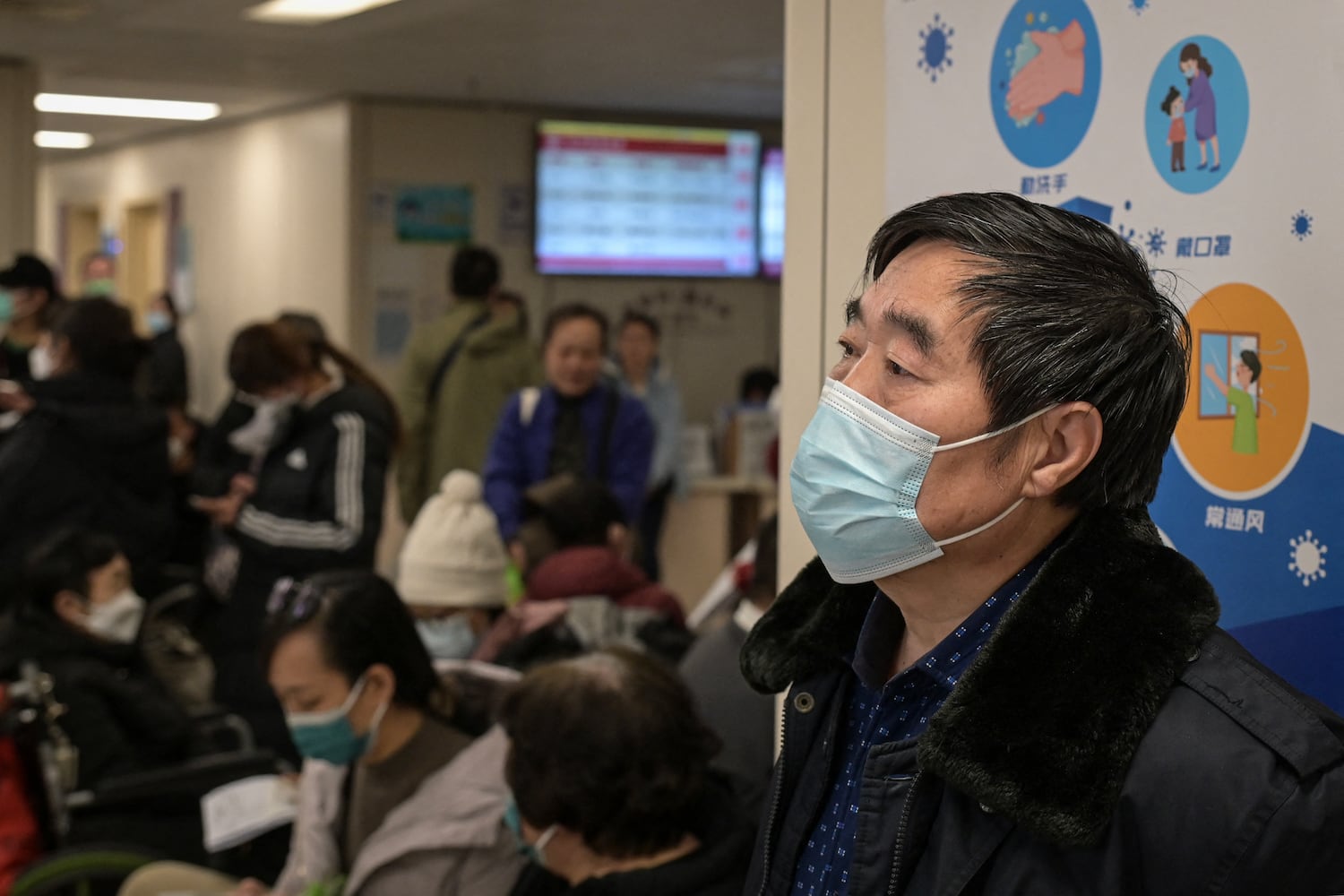China swamped with respiratory infections ahead of Lunar New Year travel rush
Warning comes as social media users post footage of crowded emergency rooms with patients on drips.

Health officials in China are calling on people to wear masks and open the windows to help reduce a wave of respiratory infections that has left hospitals across the country swamped with patients ahead of the Lunar New Year travel rush.
“Influenza is peaking in our city, with influenza A (H1N1) as the main virus,” the Beijing Center for Disease Control and Prevention said in a recent statement warning people to take precautions ahead of the Jan. 29 Lunar New Year holiday, known as Spring Festival in mainland China.
The warning came as social media users posted video clips of crowded waiting rooms with masked parents cradling children and people on drips and lying on gurneys in corridors.
“This year’s influenza is pretty severe,” Douyin user @watchthistolearnaboutBeijing said in a video filmed from the Luhe Hospital in Beijing’s Tongzhou district on Jan. 6.
“The emergency rooms can’t see everyone, and are just handing out medicines or telling people to stay home.”
“H1N1 influenza in Shanghai is causing mayhem! The hospitals are overcrowded. Parents, please protect your children. Try to avoid crowded places!” one parent said in a video filmed at one of the city’s hospitals.
“I caught the influenza A virus which caused pneumonia, and my fever was so high that I was delirious, with a temperature of around 40C (104F),” another user said from the central province of Henan.
Worst still to come
Officials said the worst of the wave could still be to come.
“With the coming of the ... Spring Festival holidays, there will be more personal travel and visits to relatives and friends,” Beijing CDC said in a notice published by the Beijing News. “You should wear a mask correctly when taking public transportation or going to crowded and relatively closed places.”
“Open the windows for ventilation 2-3 times a day, each time for no less than 30 minutes, to keep the indoor air fresh,” said the notice, which came as the Chinese Center for Disease Control and Prevention reported a sharp increase in respiratory viral infections, including human metapneumovirus, in northern China starting last month.
RELATED STORIES
WHO calls on China to release all data on COVID-19 origins
Photos of kids doing homework while on a drip spark horror in China
Chinese hospitals swamped with severe child pneumonia cases
The European Centre for Disease Prevention and Control said it was monitoring the situation for potential threats to European countries, but said there was no immediate cause for concern.
“The current epidemiological situation in China reflects a seasonal rise in respiratory infections caused by common respiratory pathogens and does not pose any specific concern [for countries in the European Economic Area or the European Union],” it said.
Meanwhile, authorities in Beijing said thats recent Mycoplasma pneumoniae, human metapneumovirus and adenovirus outbreaks had “fallen significantly,” and along with COVID-19 infections were “currently at a low level.”
State broadcaster CCTV called on schools and childcare facilities to keep classrooms ventilated and maintain good hand hygiene, and implement “prevention and control measures” in the event of a clustered outbreak.
Treatment challenges
A resident of Shanghai who gave only the pseudonym Peng for fear of reprisals said his daughter is still sick with flu-like symptoms after several trips to the hospital.
“It seems there are a whole lot of different viruses going around right now, and even the doctors don’t know what it is,” Peng said.
A resident of the eastern province of Shandong who gave only the pseudonym Liu for fear of reprisals said his area had also been hard-hit.
“They said it was influenza A I think, but we thought it could be a variant of COVID-19,” Liu said.
A resident of the central city of Wuhan who gave only the pseudonym Gu said hospitals large and small are packed with respiratory patients in that city too.
“A lot of people are going to the hospital to get IV fluids, but the seats to get IV fluids are all full in the community hospitals,” she said.

She said it’s also getting harder to find medicines to treat oneself at home.
“This morning, I went to the pharmacy next door to buy a few packs of cold medicine, but they were still sold out,” she said, adding that nobody could get hold of the antiviral Mabaloxavir, while the medicines being given by hospitals “did nothing to cure the illness.”
More effective medicines like antivirals were “too expensive, and can’t be prescribed,” she said. ‘You can buy them at your own expense, but they’re not covered by medical insurance."
Main virus unclear
Lin Xiaoxu, director of the Protovirus Laboratory at the U.S. Army Research Institute, said it was unclear exactly which viruses are driving the current wave of respiratory illness in China.
“It’s possible that there are other, more serious, respiratory viruses in China, but the government hasn’t highlighted them in their testing or their public service announcements,” Lin said.
“Instead, the media have all been focusing on human metapneumovirus [as a recent issue].”
Meanwhile, there are signs that many could struggle to afford any medical care at all.
China’s hospitals are still reeling from the financial impact of the COVID-19 pandemic, and some are trying to claw back revenue by refusing to take insurance cards and insisting that patients pay out of pocket for their treatment, according to recent reports from specialist healthcare bloggers.
“We went to one hospital [for a family member] and they told us ... that they couldn’t accept our medical insurance card, so we had to pay out of pocket,” Shanghai resident Peng told RFA Mandarin. “It’s the same for me; a lot of the medicines I take for my current condition are paid for out of pocket, and the price is very high.”
Translated with additional reporting by Luisetta Mudie.
This article has been sourced from various publicly available news platforms around the world. All intellectual property rights remain with the original publishers and authors. Unshared News does not claim ownership of the content and provides it solely for informational and educational purposes voluntarily. If you are the rightful owner and believe this content has been used improperly, please contact us for prompt removal or correction.












